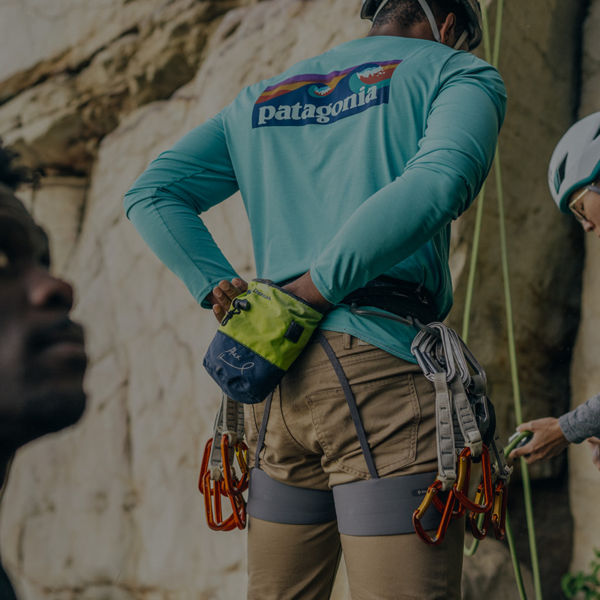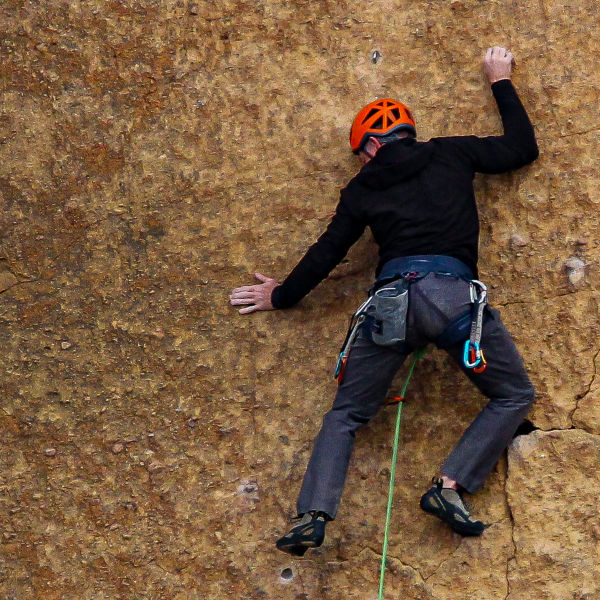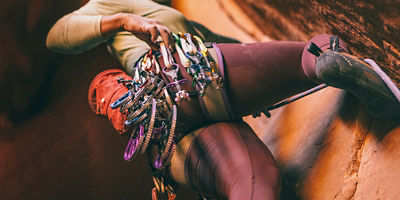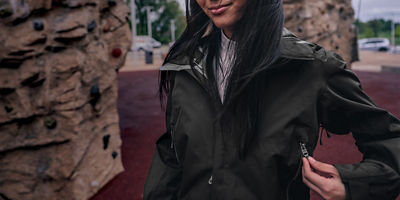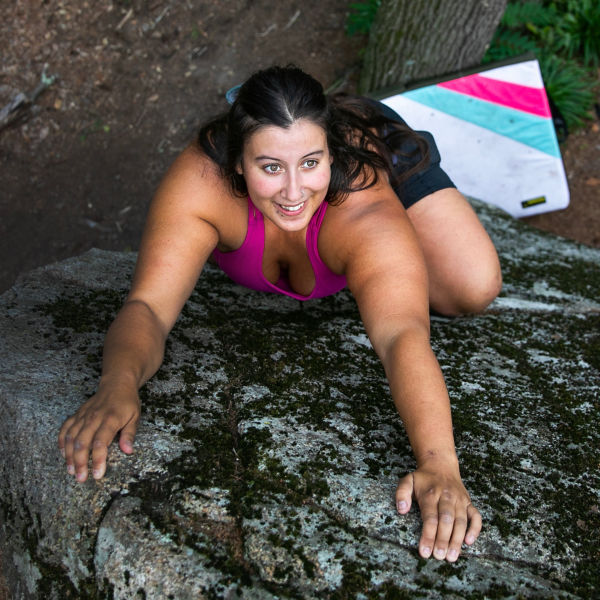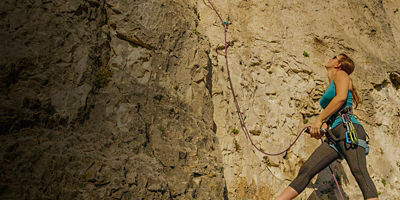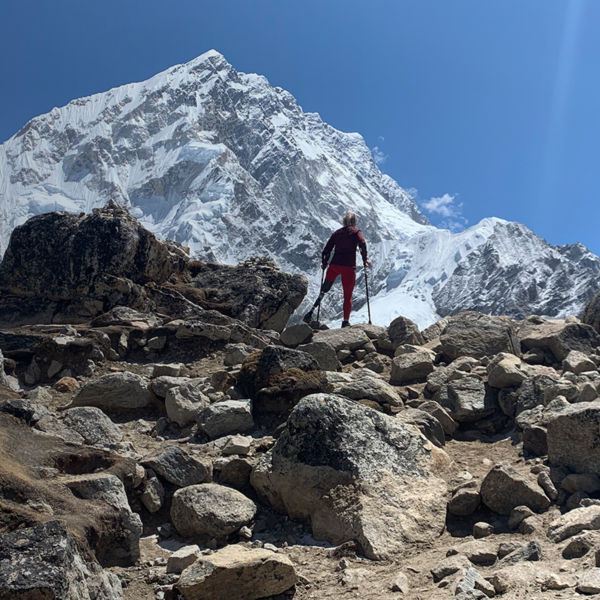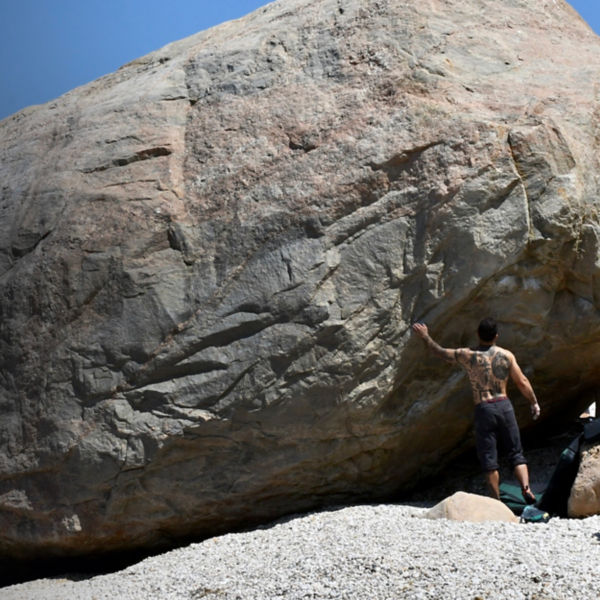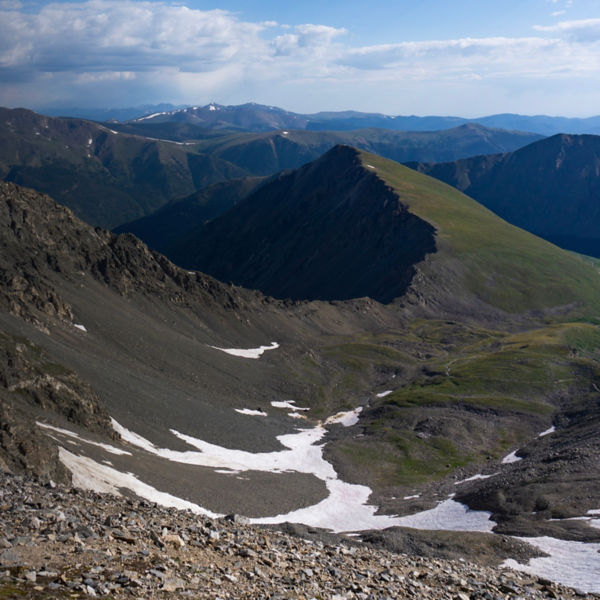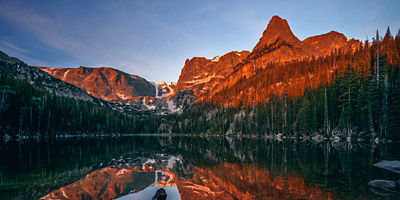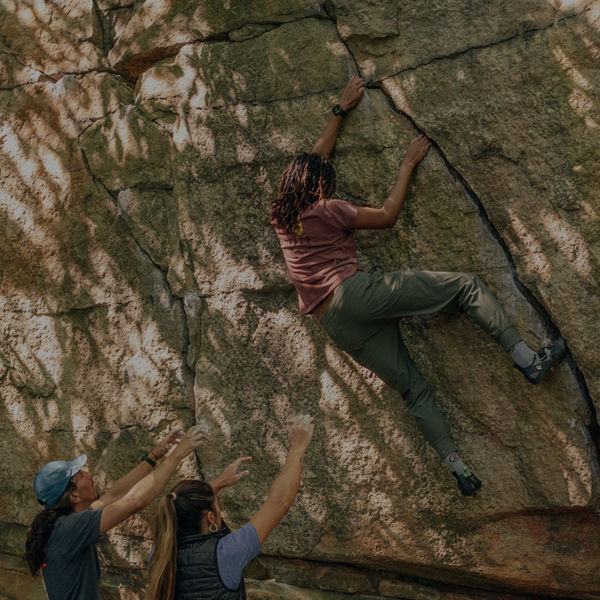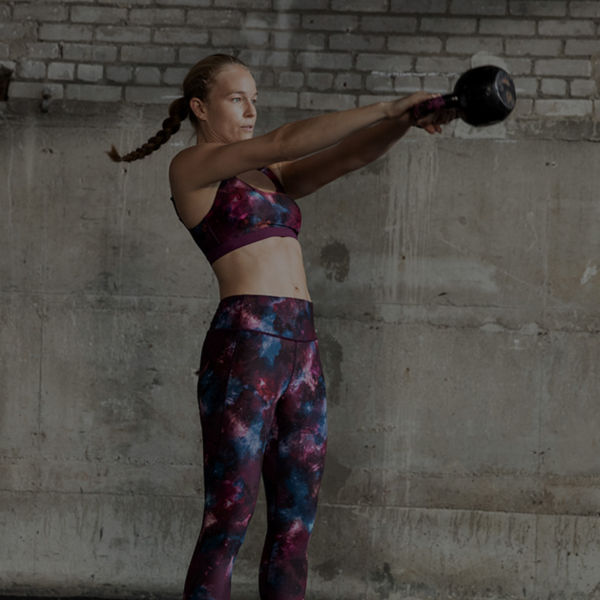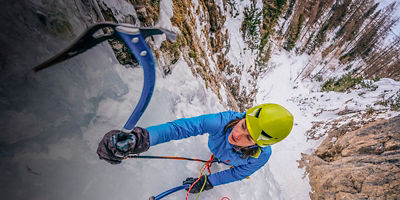
When you first start climbing, it’s tempting to throw all your gear into any old pack and call it a day. And in the beginning, when you’re mostly venturing to gyms and roadside sport crags, any old pack will work just fine.
But the truth is that climbing is hard on gear—and your climbing pack will take more of a drubbing than almost anything else you bring with you. That’s because your pack is the single thing you’re using all day long, on the approach as well as while climbing. Whether you’re loading it up with a climbing rope and heavy hardware, lugging it for miles, scraping your way up chimneys, or just slinging it from rock to rock as you move around the crag, you’ll need something that’s comfortable, supportive, and durable. The best climbing packs are all three.
With all that in mind, we’ve put together this guide to help you choose the best climbing pack for your needs. We’ll cover:
- Climbing pack volume
- Types of climbing packs
- Pack sizing 101
- Common materials
- Features to look for
- How to choose the best climbing pack
Climbing Pack Volume
Climbing packs are usually described by their volume, in liters. For reference, an average high schooler’s backpack is usually around 30 liters—about the same capacity as an all-day hiking backpack. Packs smaller than that tend to be better for on-route climbing, fast alpine approaches, and fourth-class scrambles. Packs larger than that are necessary for gear-intensive outings like mountaineering and winter climbing.
Types of Climbing Packs
There are a few distinct styles of pack out there. Understanding the difference is a great place to begin identifying the best climbing pack for you.
Gym Bags
Gym backpacks are usually 25 to 35 liters in capacity. They’re designed to pack quickly, open easily, and let sweaty clothes and shoes breathe. They usually lack sophisticated internal organization, and they’re generally not designed for hiking.
Crag Packs
These 40- to 50-liter bags are designed to bring all the comforts you need for a long day of sport climbing. They’re like the trucks of climbing packs, meant to haul supplies from the trailhead to your base at the crag. Wide openings, long zippers, and panel compartments make it easy to find all your stuff fast. Crag packs are usually comfortable over a mile or two, but not much more than that.
Multipitch Packs
If you need to bring food, water, first-aid, or other essentials up a route with you, you’ll need a multipitch bag. These svelte summit packs are usually in the 10- to 25-liter range and are designed to go up the route with you. They’re lightweight and feature minimal support. That means they’re not great for stuffing all your heavy gear into for a long hike, but it does allow them to hug your back without impeding motion. Durability varies: Some are burly enough to drag behind you while shimmying up a chimney or off-width pitch, and others are made of gossamer fabrics designed to lighten your load on long alpine climbs. (Read up on the materials specs before you choose.)
Haul Bags
Haul bags are just what they sound like: A simple, durable, bucket-shaped pack ideal for dragging big loads up rock faces on the end of a rope. They’re crucial for big-wall and aid climbing, but some sport-climbers like the simple layout of a 40- to 60-liter haul bag for toting gear to the crag.
Winter Alpine and Mountaineering Packs
If you’re expecting to encounter ice or snow—whether on summer glaciers or dead-of-winter ice flows—you’ll need a lot more gear, and that means a bigger pack. Winter and mountaineering packs are usually 40 to 55 liters. They often have special features for crampon and ice tool storage. Most offer a comfortable waist belt and robust support to accommodate the extras.
Multiday Mountaineering Packs
Mountaineering packs have enormous capacity—anywhere from 60 to 100 liters—to accommodate both climbing gear and overnight gear. That means they also come with serious suspension systems that can support the heaviest loads and are designed to be fairly comfortable over long distances. Cons: They’re expensive, heavy, and cumbersome on technical terrain.
A Note on Bouldering
If bouldering is your main area of interest, don’t worry too much about a pack; most boulderers wedge a small hiking backpack or summit pack in between their crash pads to carry their gear up.
Pack Fit
No matter what kind of climbing you do, it’s critical to have a pack that fits. Climbing gear is heavy, and an ill-fitting pack will leave all that weight hanging from your shoulders, leading to aches and pains before you even get on the wall.
First step: Measure your torso length. This is the distance from your C7 vertebra (the bony lump at the base of your neck) to the bottom of your spine (the spot equidistant between the tops of your hip bones). Many climbing packs are one-size-fits all, but if you have a shorter or longer torso—anything outside of the 18- to 20-inch zone—you’ll likely need a model that comes in small, medium, and large versions. Consult the sizing charts on the brand’s website to be sure.
If you’re smaller than average, another option is to look at women’s packs, which tend to fit shorter torso lengths.
Materials
In a sport that puts gear through the wringer, materials matter. Here are some of the most common fabrics you’ll find in climbing packs.
Nylon and Polyester
Most packs have some nylon or polyester content. These two fabrics usually perform similarly, though nylon absorbs a little water when wet while polyester is often more weather resistant. Both are great options for technical climbing packs.
Ripstop
Ripstop fabrics are easy to identify by their subtle grid pattern. The grid is a latticework of stronger fibers woven into the fabric at regular intervals; this increases tear-resistance and helps stop rips from getting bigger (though it doesn’t prevent punctures). Ripstop is a great way to add durability without adding weight.
Dyneema, Spectra, and DCF
Spectra, Dyneema, and Dyneema Composite Fabric (DCF) are all made of ultra-high-molecular-weight polyethylene (UHMWPE). This is a class of high-end fabric that is naturally lightweight, waterproof, and UV-resistant. Because UHMWPE is hard to dye, packs made of this material are often white. The biggest downside: They also tend to be expensive.
DWR and PU Coatings
Both durable water repellents (DWR) and polyurethane (PU) make a fabric weather resistant. The difference? DWR is a chemical coating that will rub off over time. PU is a layer of material with a stronger bond that tends to last longer. Note that a pack isn’t truly waterproof unless it has taped seams, which keep water from creeping in through stitching.
Denier
OK, so denier isn’t a material, but it’s an important component of pack durability. Denier is the measure of the weight of the yarn used in a fabric. Higher denier fabrics are usually stronger and heavier. Take 100-denier nylon for example. It’s probably not up for too much scraping, but it’ll feel super light on your back for fast summit pushes; 600-denier nylon, on the other hand, is going to be extremely abrasion-resistant and puncture-proof, albeit heavier.


